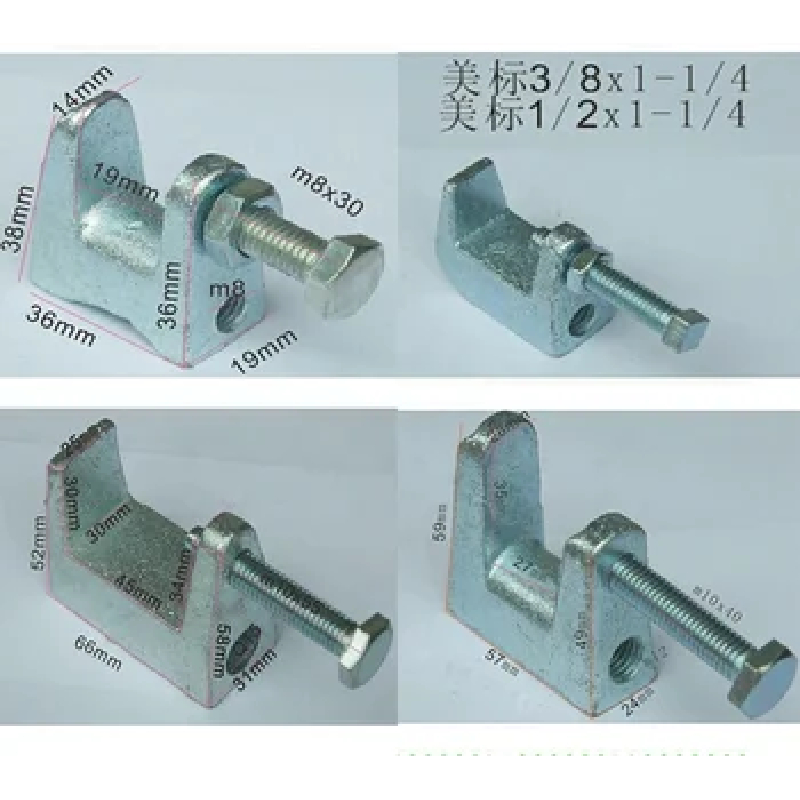Ott . 12, 2024 15:41 Back to list
cutting threaded rod
Understanding the Importance of Cutting Threaded Rods
Threaded rods are essential components in various construction and manufacturing applications. These rods, characterized by their continuous helical ridges, serve as fasteners or support structures that hold together different elements. However, there are times when the length of a threaded rod needs to be adjusted, leading to the necessity of cutting threaded rods. This article explores the importance of cutting threaded rods, the methods available for this purpose, and some best practices for ensuring a clean and efficient cut.
Why Cut Threaded Rods?
Cutting threaded rods is often necessary for several reasons. First, projects may require specific dimensions that standard-sized rods do not fulfill. In construction, for instance, a threaded rod could be too long to fit within a confined space or could exceed the necessary length for a particular application. By cutting the rod to the required size, fabricators ensure that components fit together correctly, which is crucial for structural integrity and safety.
Additionally, cutting threaded rods allows for customization according to the unique needs of a project. Different installations may demand varying lengths of threaded rods, offering flexibility in design and assembly. This customization can significantly enhance the quality and versatility of a project, whether it’s in building construction, mechanical systems, or artistic installations.
Methods for Cutting Threaded Rods
There are several methods for cutting threaded rods, each with its advantages and potential downsides. The most common techniques include
1. Hand Hacksaw A manual hacksaw is often the most straightforward tool for cutting threaded rods. This method is cost-effective and requires minimal investment in tools. However, it can be tedious and may produce uneven cuts if not handled properly.
cutting threaded rod

2. Band Saw A band saw offers a more efficient cutting option. It can handle thicker rods and allows for more precise cuts compared to a hacksaw. Its speed and effectiveness make it a favorite in industrial settings.
3. Angle Grinder An angle grinder with a metal cutting disc can be one of the fastest methods for cutting threaded rods. However, it requires some skill, and there’s the potential for sparks and debris, so safety precautions are crucial.
4. Chop Saw A chop saw, or cut-off saw, provides a powerful means for cutting threaded rods. It allows for a high degree of precision, especially when cutting multiple rods to the same length. This method is well-suited for high-volume applications.
Best Practices for Cutting Threaded Rods
To achieve the best results when cutting threaded rods, consider the following best practices
- Measure Twice, Cut Once Accurate measurements are essential. Double-checking dimensions helps prevent errors and wasted materials. - Use Proper Safety Gear Safety goggles, gloves, and appropriate attire are vital to protect oneself from flying debris and sharp edges. - Stabilize the Rod Secure the threaded rod in a vise or clamp to ensure stability during the cutting process. This reduces the risk of slippage and promotes a cleaner cut. - Deburr the Edges After cutting, use a file or deburring tool to smooth the cut edges. This process not only improves the appearance but also prevents injuries and ensures proper fitment with nuts or other components.
Conclusion
Cutting threaded rods is a crucial skill in both construction and manufacturing. Understanding the reasons for cutting, utilizing the right methods, and adhering to best practices will lead to better outcomes in your projects. Whether you are a DIY enthusiast or a seasoned professional, mastering the technique of cutting threaded rods can enhance your craftsmanship and ensure the success of your endeavors.
-
The Ubiquitous Reach of DIN934 in Application Realms
NewsMay.16,2025
-
Exploring Different Bolt Types
NewsMay.16,2025
-
Cracking the Code of Sleeve Anchor Mastery
NewsMay.16,2025
-
Clamp Design Principles,Types and Innovations
NewsMay.16,2025
-
Artistry Inspired by the Humble Anchor Bolt
NewsMay.16,2025
-
A Deep Dive into Screw Types
NewsMay.16,2025


